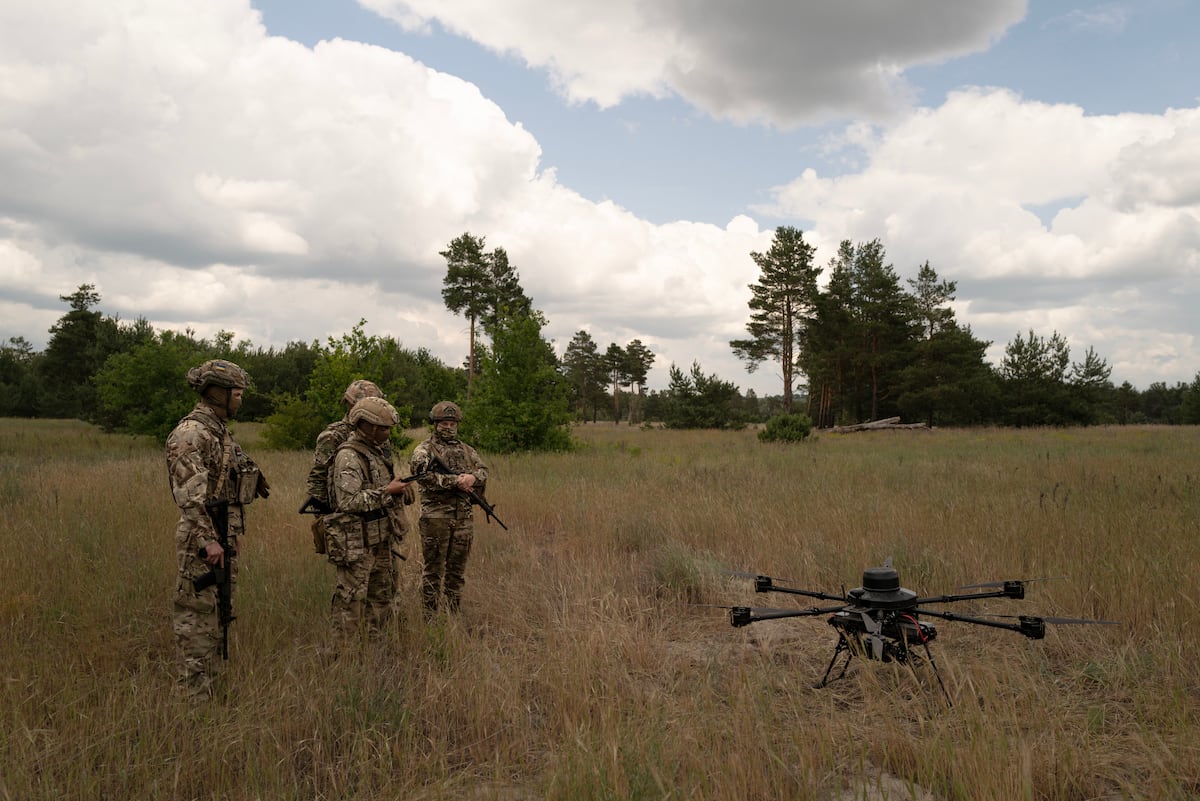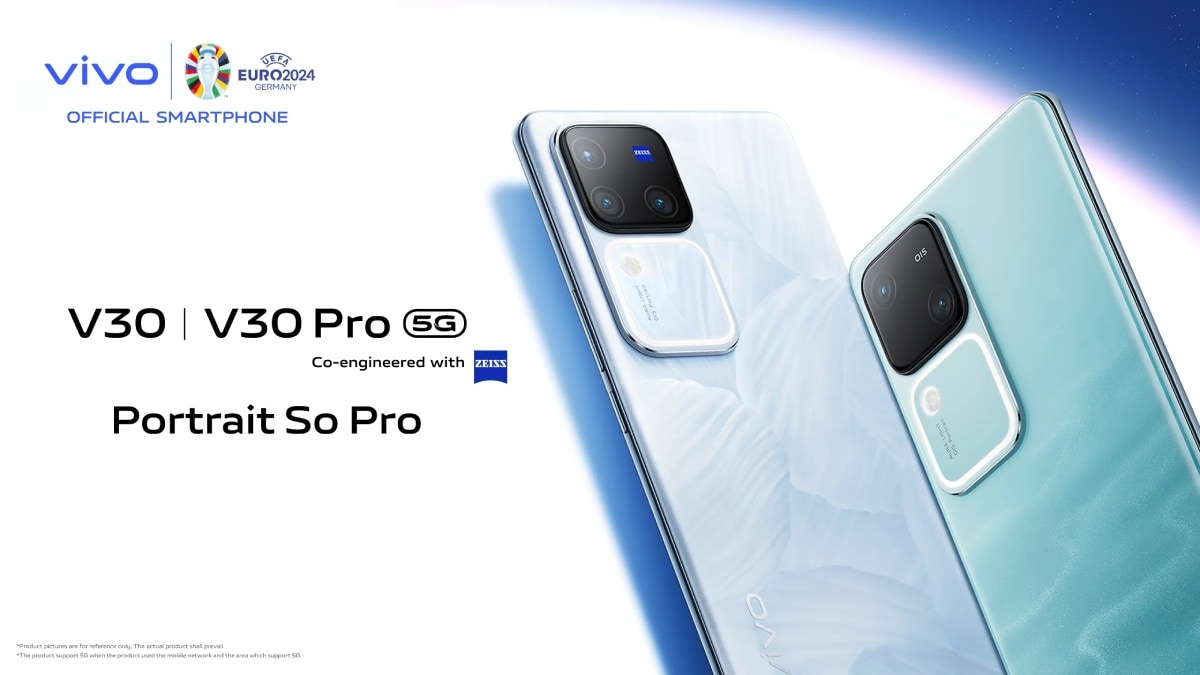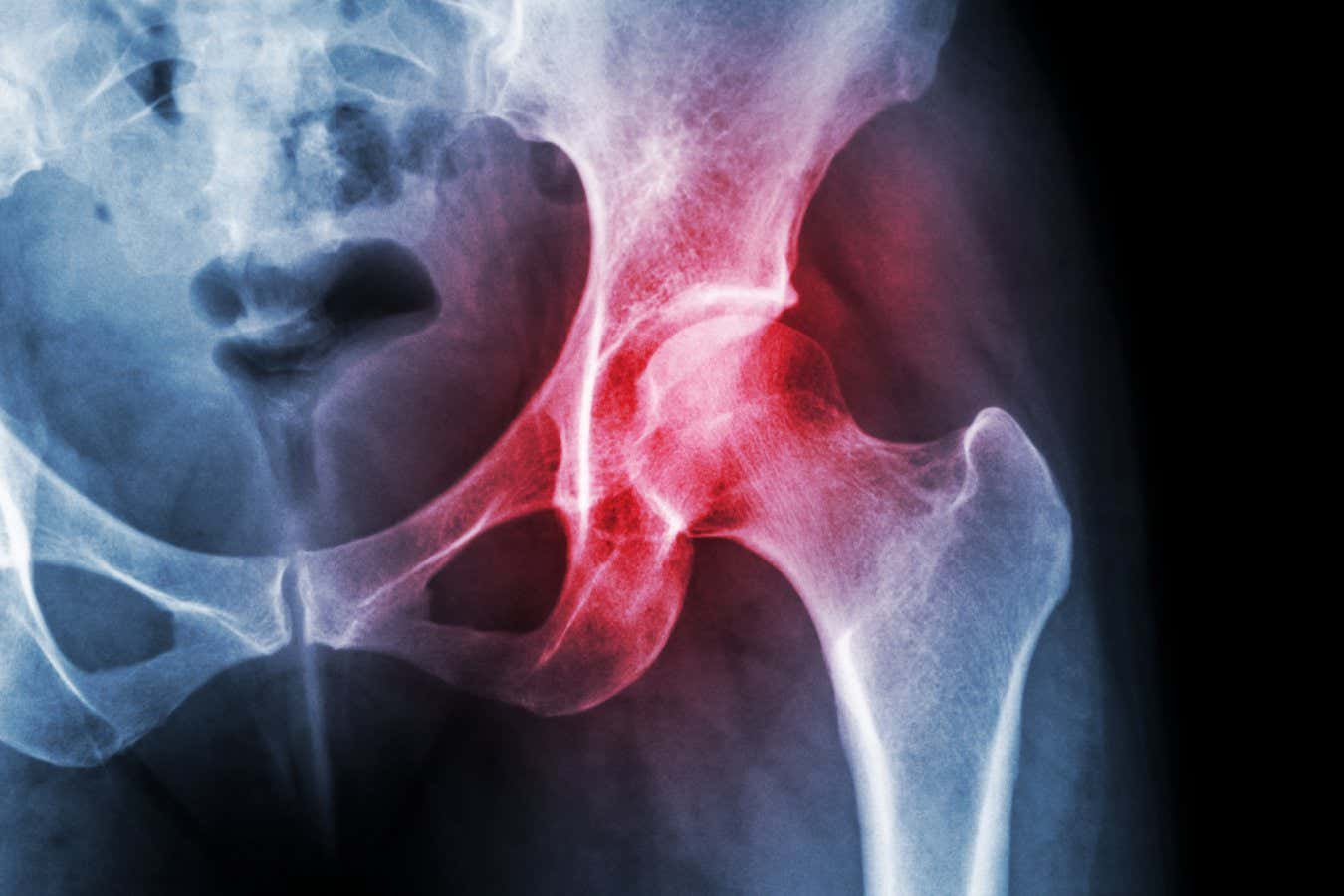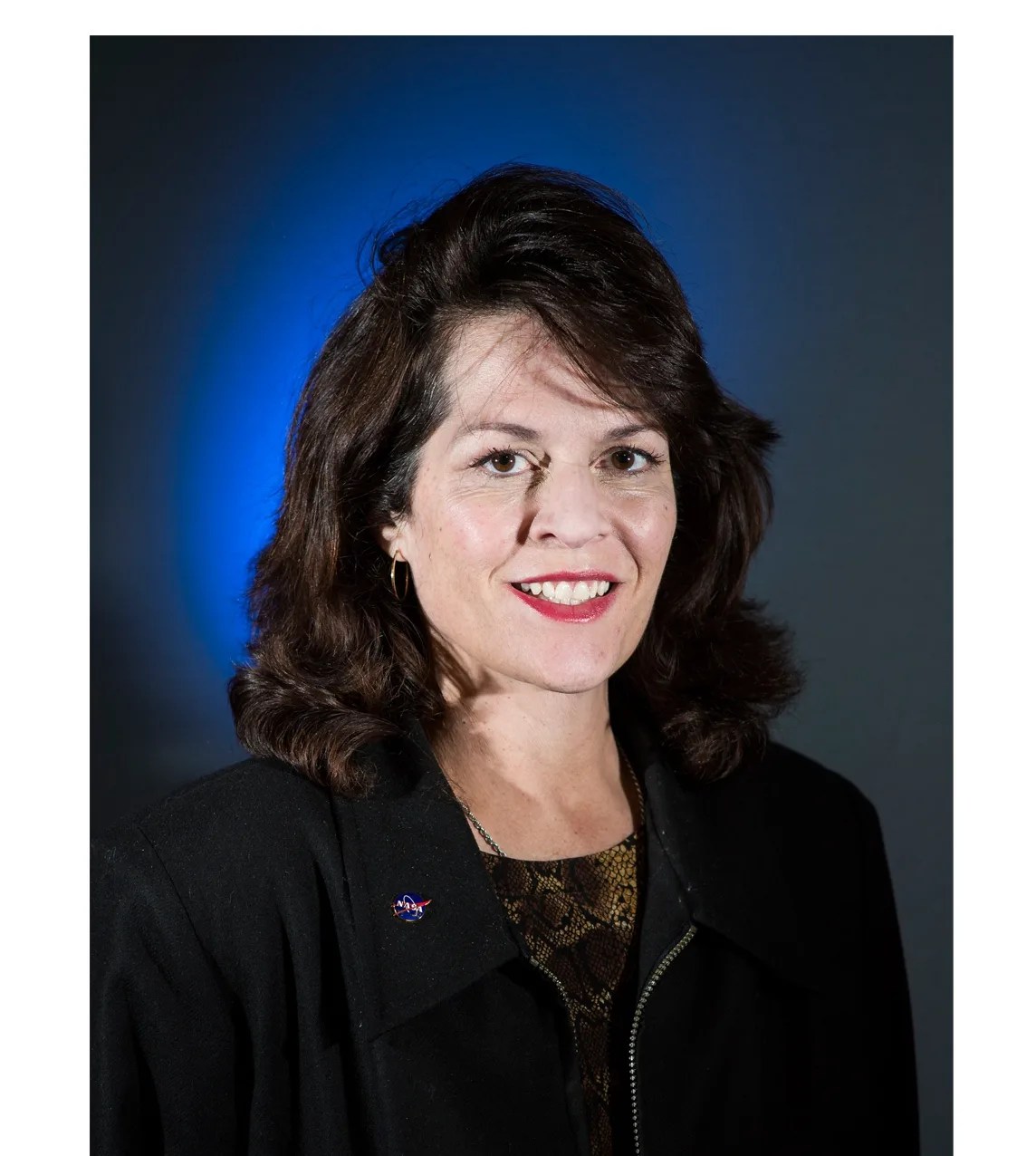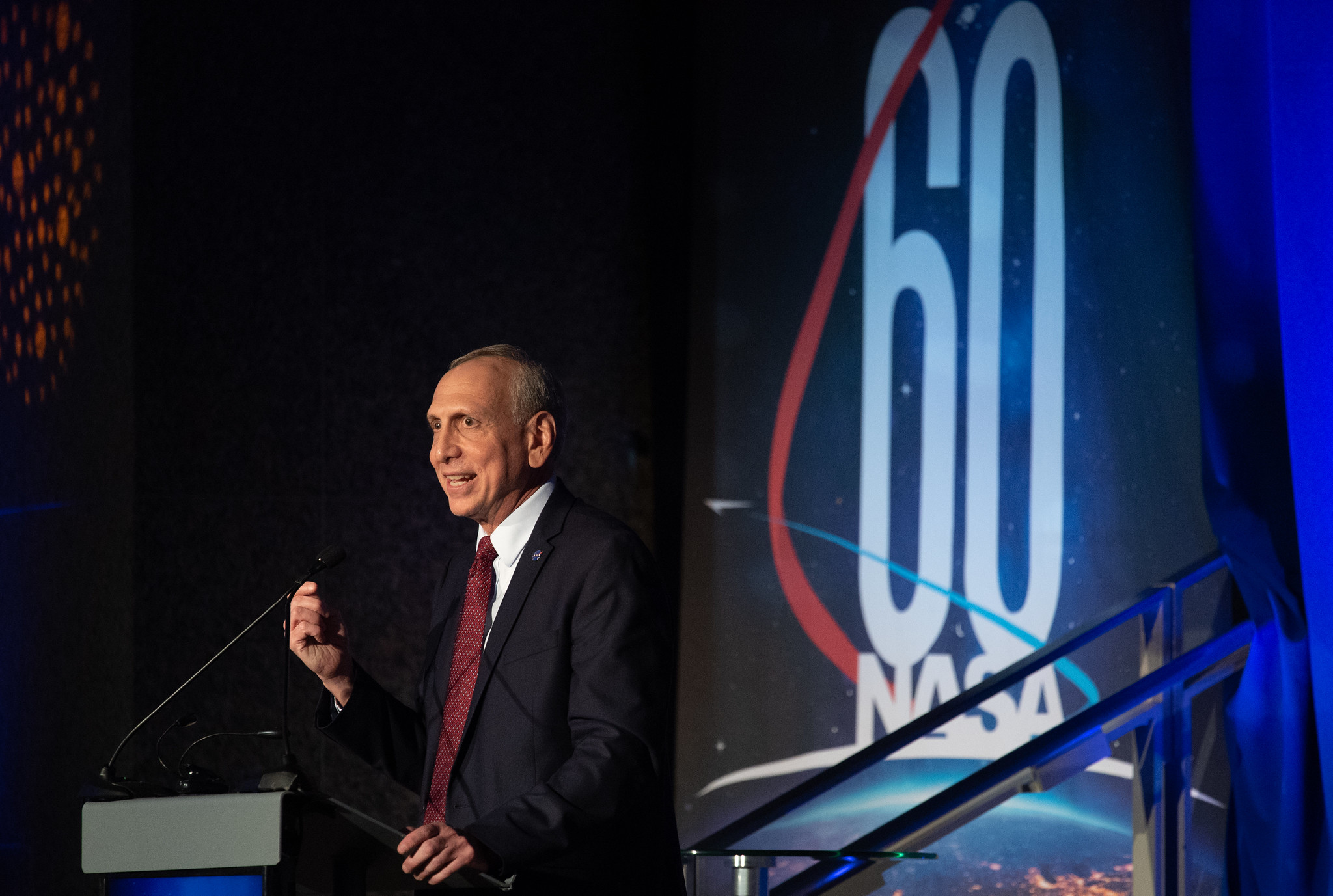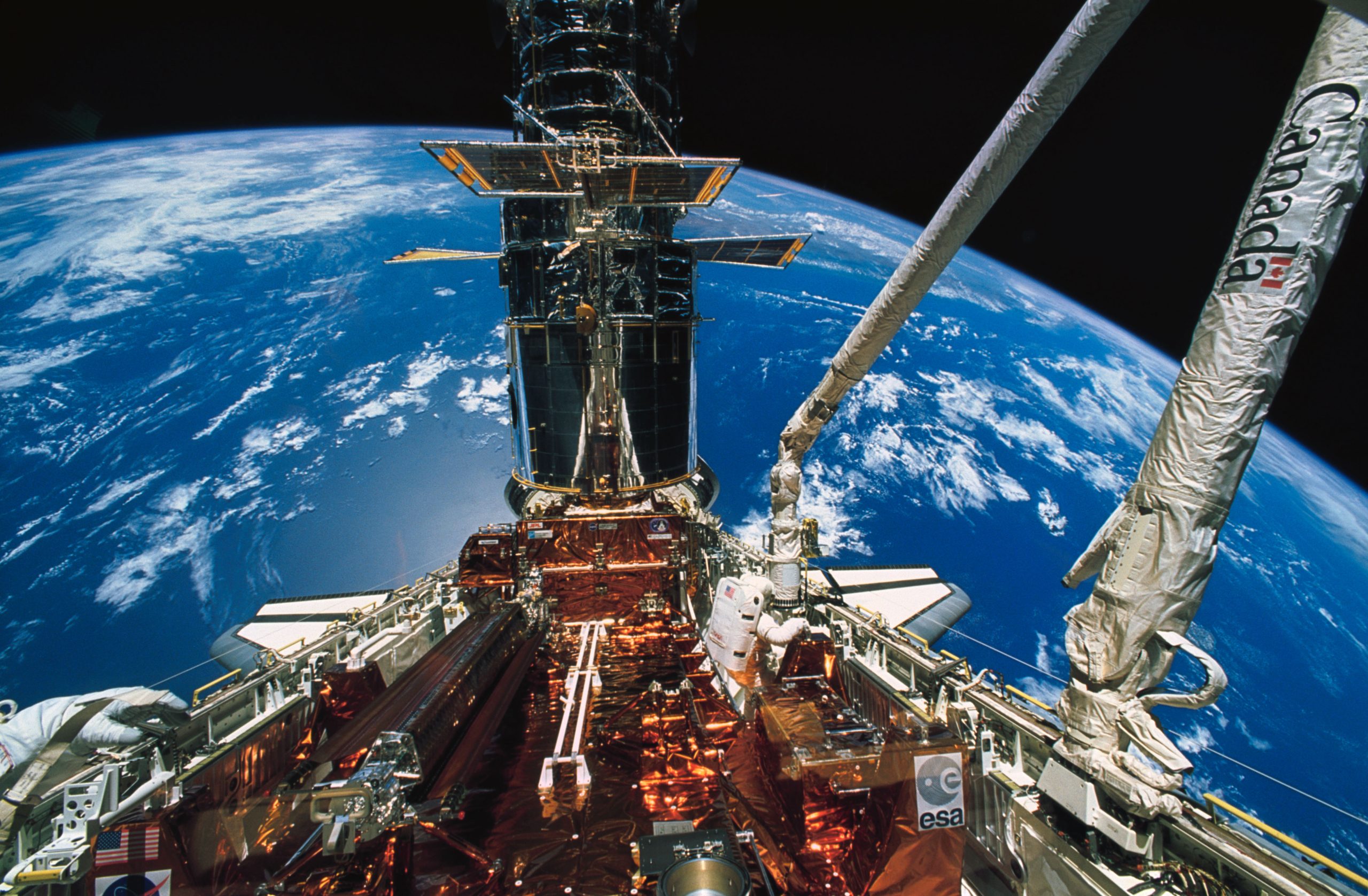The Marshall Star for February 14, 2024
By Jonathan Deal The Moon holds clues to the evolution of Earth, the planets, and the Sun, and a
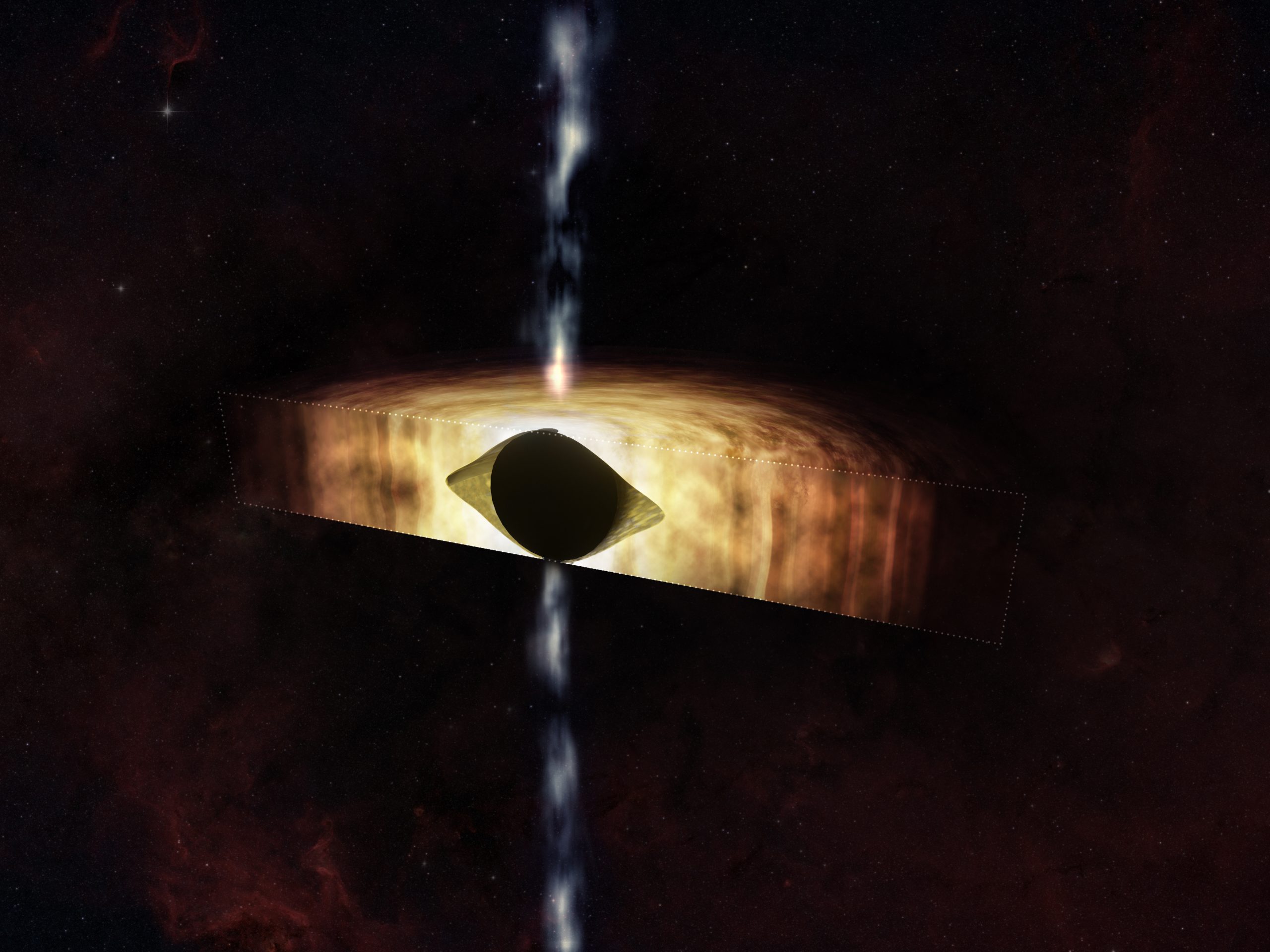
By Jonathan Deal
The Moon holds clues to the evolution of Earth, the planets, and the Sun, and a new NASA-funded study is helping scientists better understand some of the mysteries beneath the surface of our nearest cosmic neighbor. The co-author of that study is chief scientist of NASA’s Marshall Space Flight Center, Renee Weber, who is also a member of NASA’s Artemis Science Team – a broad group of scientists from around the agency working to commence a new era of deep space science and exploration.
As a lunar seismologist and lunar geophysicist, Weber provides expertise to the Artemis Science Team, including knowledge of the types of seismic events that can occur on the Moon, to better understand its internal geology and surface environment.
The latest study revealed that the Moon is still geologically active and presents evidence that tectonic faults, generated as the Moon’s interior gradually cools and shrinks, are found near some of the areas NASA identified as candidate landing regions for Artemis III – the first Artemis mission planned to have a crewed lunar landing.
“This study looked at tectonic faults and steep slopes in the lunar South polar region and found that some areas are susceptible to seismic shaking and regolith landslides,” Weber said. “Once the faults were mapped, we calculated the sizes of potential moonquakes that could be generated to create a map of seismic hazard in the vicinity of tectonic faults and steep slopes.”
The study discovered that relatively small, young thrust faults, called lobate scarps, are widely distributed in the lunar crust. The scarps form where contractional forces break the crust and push, or thrust, rock on one side of the fault up and over rock on the other side. The contraction is caused by cooling of the Moon’s still-hot interior and tidal forces exerted by Earth, resulting in global shrinking. The scarps were identified in images taken by the Lunar Reconnaissance Orbiter Camera onboard NASA’s LRO (Lunar Reconnaissance Orbiter).
The formation of the faults is accompanied by seismic activity in the form of shallow-depth moonquakes. Such shallow moonquakes were recorded by the Apollo Passive Seismic Network, a series of seismometers deployed by the Apollo astronauts, and could potentially also be recorded by a new seismic instrument scheduled to launch next year aboard an upcoming CLPS (Commercial Lunar Payload Services) flight. That instrument – the Farside Seismic Suite – will return the agency’s first seismic data from the far side of the Moon, helping scientists to understand the region’s tectonic activity. The data may also reveal how often the lunar far side is impacted by small meteorites and determine if the seismicity is different on the far side of the Moon from what was measured during Apollo on the lunar near side.
“To better understand the seismic hazard posed to future human activities on the Moon, we need new seismic data, not just at the South Pole, but globally,” Weber said. “Missions like the upcoming Farside Seismic Suite, as well as future potential missions like the Lunar Geophysical Network concept, will expand upon measurements made during Apollo and add to our knowledge of global seismicity.”
As NASA develops long-term infrastructure on the lunar surface, Weber’s research will provide invaluable insight for the Artemis Science Team that will be refining mission architectures that preserve flexibility for science and operations at a variety of landing sites and will apply new scientific knowledge, such as continued research on seismic measurements, gathered along the way.
“Being able to go back to the Moon, gather more data, and pick up more samples will help us improve our understanding of the Moon and answer our fundamental questions – how did it form? How did it evolve? Where are the resources? More seismic measurements like the ones conducted during Apollo could help us better characterize seismicity in the lunar South Pole region,” Weber said.
The study does not impact the Artemis III landing region selection process, according to Weber, because estimating how often a specific region experiences a moonquake is difficult to do accurately, and like earthquakes, scientists can’t predict moonquakes. Additionally, for a shorter duration mission like Artemis III, the likelihood of experiencing hazards due to seismic shaking is much lower.
As NASA develops long-term infrastructure, the agency will identify potential regions for where different elements can be established closer to the dates of future Artemis missions. In this site selection process, some of the factors for consideration could be geographic characteristics such as proximity to tectonic features and terrain, making Weber’s research all the more valuable.
Deal is a public affairs officer with Marshall’s Office of Communications.
By Wayne Smith
In his youth, NASA technologist Les Johnson was riveted by the 1974 novel “The Mote in God’s Eye,” by Jerry Pournelle and Larry Niven, in which an alien spacecraft propelled by solar sails visits humanity. Today, Johnson and a NASA team are preparing to test a similar technology.
NASA continues to unfurl plans for solar sail technology as a promising method of deep space transportation. The agency cleared a key technology milestone in January with the successful deployment of one of four identical solar sail quadrants. The deployment was showcased Jan. 30 at Redwire Corp.’s new facility in Longmont, Colorado. NASA’s Marshall Space Flight Center leads the solar sail team, comprised of prime contractor Redwire, which developed the deployment mechanisms and the nearly 100-foot-long booms, and subcontractor NeXolve, of Huntsville, which provided the sail membrane. In addition to leading the project, Marshall developed the algorithms needed to control and navigate with the sail when it flies in space.
The sail is a propulsion system powered by sunlight reflecting from the sail, much like a sailboat reflects the wind. While just one quarter of the sail was unfurled in the deployment at Redwire, the complete sail will measure 17,780 square feet when fully deployed, with the thickness less than a human hair at 2 and a half microns. The sail is made of a polymer material coated with aluminum.
NASA’s Science Mission Directorate recently funded the solar sail technology to reach a new technology readiness level, or TRL 6, which means it’s ready for proposals to be flown on science missions.
“This was a major last step on the ground before it’s ready to be proposed for space missions,” Johnson, who has been involved with sail technology at Marshall for about 25 years, said. “What’s next is for scientists to propose the use of solar sails in their missions. We’ve met our goal and demonstrated that we’re ready to be flown.”
A solar sail traveling through deep space provides many potential benefits to missions using the technology because it doesn’t require any fuel, allowing very high propulsive performance with very little mass. This in-space propulsion system is well suited for low-mass missions in novel orbits.
“Once you get away from Earth’s gravity and into space, what is important is efficiency and enough thrust to travel from one position to another,” Johnson said.
Some of the missions of interest using solar sail technology include studying space weather and its effects on the Earth, or for advanced studies of the north and south poles of the Sun. The latter has been limited because the propulsion needed to get a spacecraft into a polar orbit around the Sun is very high and simply not feasible using most of the propulsion systems available today. Solar sail propulsion is also possible for enhancing future missions to Venus or Mercury, given their closeness to the Sun and the enhanced thrust a solar sail would achieve in the more intense sunlight there.
Moreover, it’s the ultimate green propulsion system, Johnson said – as long as the Sun is shining, the sail will have propulsion. Where the sunlight is less, he envisions a future where lasers could be used to accelerate the solar sails to high speeds, pushing them outside the solar system and beyond, perhaps even to another star. “In the future, we might place big lasers in space that shine their beams on the sails as they depart the solar system, accelerating them to higher and higher speeds, until eventually they are going fast enough to reach another star in a reasonable amount of time.”
Learn more about solar sails and other NASA advanced space technology.
Smith, a Media Fusion employee and the Marshall Star editor, supports the Marshall Office of Communications.
As part of NASA’s CLPS (Commercial Lunar Payload Services) initiative and Artemis campaign, SpaceX is targeting no earlier than 12:05 a.m. CST on Feb. 15 for a Falcon 9 launch of Intuitive Machines’ first lunar lander to the Moon’s surface. Liftoff will be from Launch Complex 39A at the agency’s Kennedy Space Center.
The launch of the mission was postponed Feb. 13 due to off-nominal methane temperatures prior to stepping into methane load.
Live launch coverage will air on NASA+, NASA Television, the NASA app, and the agency’s website. NASA TV launch coverage begins at 11:20 p.m. Coverage is subject to change based on real-time operational activities. Follow the Artemis blog for updates.
Intuitive Machines’ Nova-C lander is expected to land on the Moon on Feb. 22. Among the items on its lander, the IM-1 mission will carry NASA science and technology instruments focusing on plume-surface interactions, space weather/lunar surface interactions, radio astronomy, precision landing technologies, and a communication and navigation node for future autonomous navigation technologies.
Demonstrating autonomous navigation, the Lunar Node-1 experiment, or LN-1, is a radio beacon designed to support precise geolocation and navigation observations for landers, surface infrastructure, and astronauts, digitally confirming their positions on the Moon relative to other craft, ground stations, or rovers on the move. LN-1 was developed, built, and tested at NASA’s Marshall Space Flight Center.
An artist’s illustration depicts the findings of a new study about the supermassive black hole at the center of our galaxy called Sagittarius A* (abbreviated as Sgr A*). As reported in a press release, this result found that Sgr A* is spinning so quickly that it is warping spacetime – that is, time and the three dimensions of space – so that it can look more like a football.
These results were made with NASA’s Chandra X-ray Observatory and the National Science Foundation’s Karl G. Jansky Very Large Array, or VLA. A team of researchers applied a new method that uses X-ray and radio data to determine how quickly Sgr A* is spinning based on how material is flowing towards and away from the black hole. They found Sgr A* is spinning with an angular velocity that is about 60% of the maximum possible value, and with an angular momentum of about 90% of the maximum possible value.
Black holes have two fundamental properties: their mass (how much they weigh) and their spin (how quickly they rotate). Determining either of these two values tells scientists a great deal about any black hole and how it behaves. In the past, astronomers made several other estimates of Sgr A*’s rotation speed using different techniques, with results ranging from Sgr A* not spinning at all to it spinning at almost the maximum rate.
The new study suggests that Sgr A* is, in fact, spinning very rapidly, which causes the spacetime around it to be squashed down. The illustration shows a cross-section of Sgr A* and material swirling around it in a disk. The black sphere in the center represents the so-called event horizon of the black hole, the point of no return from which nothing, not even light, can escape.
Looking at the spinning black hole from the side, as depicted in this illustration, the surrounding spacetime is shaped like a football. The faster the spin the flatter the football.
The yellow-orange material to either side represents gas swirling around Sgr A*. This material inevitably plunges towards the black hole and crosses the event horizon once it falls inside the football shape. The area inside the football shape but outside the event horizon is therefore depicted as a cavity. The blue blobs show jets firing away from the poles of the spinning black hole. Looking down on the black hole from the top, along the barrel of the jet, spacetime is a circular shape.
A black hole’s spin can act as an important source of energy. Spinning supermassive black holes produce collimated outflows such as jets when their spin energy is extracted, which requires that there is at least some matter in the vicinity of the black hole. Because of limited fuel around Sgr A*, this black hole has been relatively quiet in recent millennia with relatively weak jets. This work, however, shows that this could change if the amount of material in the vicinity of Sgr A* increases.
To determine the spin of Sgr A*, the authors used an empirically based technique referred to as the “outflow method” that details the relationship between the spin of the black hole and its mass, the properties of the matter near the black hole, and the outflow properties. The collimated outflow produces the radio waves, while the disk of gas surrounding the black hole is responsible for the X-ray emission. Using this method, the researchers combined data from Chandra and the VLA with an independent estimate of the black hole’s mass from other telescopes to constrain the black hole’s spin.
The paper describing these results led by Ruth Daly (Penn State University) is published in the January 2024 issue of the Monthly Notices of the Royal Astronomical Society and appears online. The other authors are Biny Sebastian (University of Manitoba, Canada), Megan Donahue (Michigan State University), Christopher O’Dea (University of Manitoba), Daryl Haggard (McGill University) and Anan Lu (McGill University).
NASA’s Marshall Space Flight Center manages the Chandra program. The Smithsonian Astrophysical Observatory’s Chandra X-ray Center controls science operations from Cambridge, Massachusetts, and flight operations from Burlington, Massachusetts.
Studies of neurological organoids, plant growth, and shifts in body fluids are among the scientific investigations that NASA astronauts Matthew Dominick, Michael Barratt, Jeanette Epps, and Tracy C. Dyson will help support aboard the International Space Station as part of Expedition 71. NASA’s SpaceX Crew-8 mission is targeting launch to the space station later this month.
A flag for Crew-8 will be raised Feb. 26 outside the HOSC (Huntsville Operation Support Center) at NASA’s Marshall Space Flight Center. The HOSC is a multi-mission facility that provides engineering and mission operations support for NASA’s Commercial Crew Program, Space Launch System rocket, Artemis lunar science missions, and science conducted on the space station.
The Payload Operations Integration Center within HOSC operates, plans, and coordinates the science experiments onboard the space station 365 days a year, 24 hours a day.
Here are details on some of the work scheduled during this upcoming expedition aboard the microgravity laboratory:
Modeling Neuroinflammation
HBOND (Human Brain Organoid Models for Neurodegenerative Disease & Drug Discovery) studies the mechanisms behind neuroinflammation, a common feature of neurodegenerative disorders. Researchers create organoids using patient-derived iPSCs (induced pluripotent stem cells) from patients who have Parkinson’s disease and primary progressive multiple sclerosis. The sixth space station organoid investigation funded by the National Stem Cell Foundation, HBOND includes for the first time Alzheimer’s iPSCs and testing of the effects of drugs in development to treat neuroinflammation. Results could help improve diagnostics, provide insights into the effects of aging, accelerate drug discovery, and identify therapeutic targets for patients suffering from neurodegenerative diseases. The organoid models also could provide a way to anticipate how extended spaceflight affects the brain and support development of countermeasures.
Protecting Plants from Spaceflight Stressors
Plants can serve as a source of food and provide other life-support services on long-term missions to the Moon and Mars. The Study on Plant Responses Against the Stresses of Microgravity and High Ultraviolet Radiation in Space (Plant UV-B) examines how stress from microgravity, UV radiation, and the combination of the two affect plants at the molecular, cellular, and whole organism levels. Results could increase understanding of plant growth in space and support improvements in plant cultivation technologies for future missions.
Reversing Fluid Shifts
Weightlessness causes fluids in the body to move toward the head, which can cause changes in eye structure and vision known as Spaceflight Associated Neuro-ocular Syndrome (SANS) along with other health problems. Mitigating Headward Fluid Shifts with Veno-constrictive Thigh Cuffs During Spaceflight (Thigh Cuff) examines whether thigh pressure cuffs could provide a simple way to counter this shift in body fluids and help protect astronauts from SANS and other issues on future missions to the Moon and Mars. Thigh cuffs also could help treat or prevent problems for patients on Earth who have conditions that cause fluid accumulation in the head, such as long-term bedrest and diseases.
Incredible Edible Algae
Arthrospira-C (Art-C), an investigation from ESA (European Space Agency) analyzes how the cyanobacterium Limnospira responds to spaceflight conditions and whether it produces the same quantity and quality of oxygen and biomass in space as on Earth. These microalgae, also known as Spirulina, could be used to remove carbon dioxide exhaled by astronauts, which can become toxic in an enclosed spacecraft, and to produce oxygen and fresh food as part of life support systems on future missions. Correct predictions of oxygen and biomass yields are crucial for design of life support systems using bioprocesses. Spirulina also has been shown to have radioprotective properties and eating it could help protect space travelers from cosmic radiation, as well as conserve healthy tissue in patients undergoing radiation treatment on Earth.
Search this database of scientific experiments to learn more about those mentioned above.
NASA has awarded $3.7 million to 11 teams to support new collaborations between the agency and United States institutions not historically part of the agency’s research enterprise. These are the first awards given through a new program from the agency’s SMD (Science Mission Directorate) to improve diversity, equity, inclusion, and accessibility in the science and engineering communities, as well as NASA’s workforce.
“As the agency continues to build relationships with under-resourced institutions through initiatives like the bridge program, we are intentionally increasing equitable access to NASA for the best and brightest talents in our nation,” said Shahra Lambert, NASA senior advisor for engagement. “These partnerships will help NASA develop a diverse and capable workforce to further our understanding of the cosmos.”
NASA’s SMD Bridge Program provides seed funding for research projects that will build strong foundations for long-lasting relationships with the agency. The projects offer hands-on training and mentorship for students, as well as new research opportunities for faculty, to help science and engineering students transition into graduate schools, employment by NASA, or science, technology, engineering, and math careers generally.
The teams are led by faculty at institutions that represent new collaborations for NASA. These include Hispanic-serving institutions, Historically Black Colleges and Universities, Asian American and Native American Pacific Islander-serving institutions, and primarily undergraduate institutions. The research projects connect these institutions to seven NASA centers, including the agency’s Marshall Space Flight Center, and could benefit more than 100 students.
“We applaud this inaugural cohort of grant recipients for their innovative research projects, which will make important connections between students, faculty, and NASA,” said Michael New, Science Mission Directorate deputy associate administrator for research at NASA Headquarters. “These awards are a first and important step for the SMD Bridge Program in supporting long-term relationships toward creating a more diverse and robust STEM workforce.”
There is an additional opportunity to apply for seed funding through the SMD Bridge Program. Applications are open until March 29.
The following projects were selected as the first cohort to receive seed funding:
Additive Manufacturing of Electronics for NASA Applications
This project, a collaboration between Florida A&M University and Marshall and NASA’s Goddard Space Flight Center, will explore technology solutions through additive manufacturing approaches to manufacture strain and gas sensors.
Diversifying Student Pipelines in STEM: Environmental Pollution Reduction Inspired by Planetary Science
This project, a collaboration that brings California State University, Los Angeles, together with NASA’s Jet Propulsion Laboratory, and California State Polytechnic University, Pomona, draws from the field of planetary science to address environmental pollution.
FireSage: SJSU-NASA ARC Bridge Seed Program
FireSage is a collaboration between San Jose State University’s Wildfire Interdisciplinary Research Center and the Earth Science Division at NASA’s Ames Research Center. It engages students in a computing, artificial intelligence, and machine learning research project and training activities in wildfire science.
Hampton University STEM Experience with NASA Langley Research Center Doppler Aerosol Wind Lidar
This collaboration between Hampton University and NASA’s Langley Research Center offers a foundation in the advancement of planetary boundary layer studies with Lidar remote sensing.
Development of Antireflection Coatings for Future NASA Missions
This project is a collaboration between Delaware State University and Goddard, working with transparent, electrically conductive films to design and produce an environmentally durable anti-reflection coating for guidance, navigation, and control Lidar.
CUBES: Capacity Building Using CubeSats for Earth Science
This collaboration between Tuskegee University, the Laboratory for Atmospheric Science and Physics at University of Colorado, and Ames uses CubeSats to provide faculty and students with experience designing and executing science mission flight projects.
Space Materials and Microbiome Research: A Bridge to Future JSC Workforce
In this project, the University of Houston-Clear Lake collaborates with NASA’s Johnson Space Center. The project’s Composite Materials track will develop a protective nanocomposite shield for spacecraft materials, while the Microbiome track will create a comprehensive library of draft bacterial genomes.
The HALOQUEST: Halobacterium Astrobiological Laboratory for Observing and Questioning Extraterrestrial Signatures and Traits Project
This collaboration between California State University, Northridge, and JPL will study Halobacterium salinarum NRC-1 grown under simulated stressful environmental conditions, which could help understand possibilities for life on other planets.
Observations of Ice-Water and Isotopes Using Mid-Infrared Laser Heterodyne Radiometer LIDAR
In collaboration with Goddard, Delaware State University will develop Earth science, planetary exploration, and sensing technologies, including a lunar rover payload with instruments to simultaneously detect and correlate water isotopes with other trace gas species.
Application of Remote Sensing for Predicting Mosquito-Borne Disease Outbreaks
This project is a collaboration between Southern Nazarene University and JPL to identify areas at risk for mosquito-borne disease outbreaks using remote sensing data.
Building a Diverse, Sustainable, and Robust Undergraduate-to-Graduate STEM Network through Inter-Institutional, Interdisciplinary Research Collaborations in Complex Fluids/Soft Matter
This project is a collaboration between Colorado Mesa University and NASA’s Glenn Research Center to strengthen and grow a research, education, and training network centered around problems in complex fluids and soft matter, with initial emphasis on heat transfer and multiphase flows.
Two missions that are part of programs managed by NASA’s Marshall Space Flight Center for the agency’s Science Mission Directorate are featured in “This Week @ NASA,” a weekly video program broadcast on NASA-TV and posted online.
NASA’s Lucy spacecraft recently completed the second and largest planned main engine burn of its 12-year mission. These burns, combined with the mission’s second Earth gravity assist maneuver targeted for December 2024, will help Lucy transition from its current orbit around the Sun to a new orbit that will carry it beyond the orbit of Jupiter and into the realm of the never-before-explored Jupiter Trojan asteroids.
NASA’s Goddard Space Flight Center provides overall mission management, systems engineering, and safety and mission assurance. Lockheed Martin Space in Littleton, Colorado, built the spacecraft. Lucy is the 13th mission in NASA’s Discovery Program. Marshall manages the Discovery Program for the Science Mission Directorate at NASA Headquarters.
On Feb. 3, NASA’s Juno spacecraft made a second close flyby of Jupiter’s moon Io. Like Juno’s previous flyby of Io in late December 2023, this second pass took Juno about 930 miles above Io’s surface. The twin flybys were designed to gain new insight into how the moon’s volcanic engine works and investigate whether a global magma ocean exists under the moon’s rocky, mountainous surface.
NASA’s Jet Propulsion Laboratory, a division of Caltech, manages the Juno mission for the principal investigator, Scott J. Bolton, of the Southwest Research Institute in San Antonio. Juno is part of NASA’s New Frontiers Program, which is managed at Marshall for the Science Mission Directorate. Lockheed Martin Space in Denver built and operates the spacecraft.
View this and previous episodes at “This Week @NASA” on NASA’s YouTube page.

